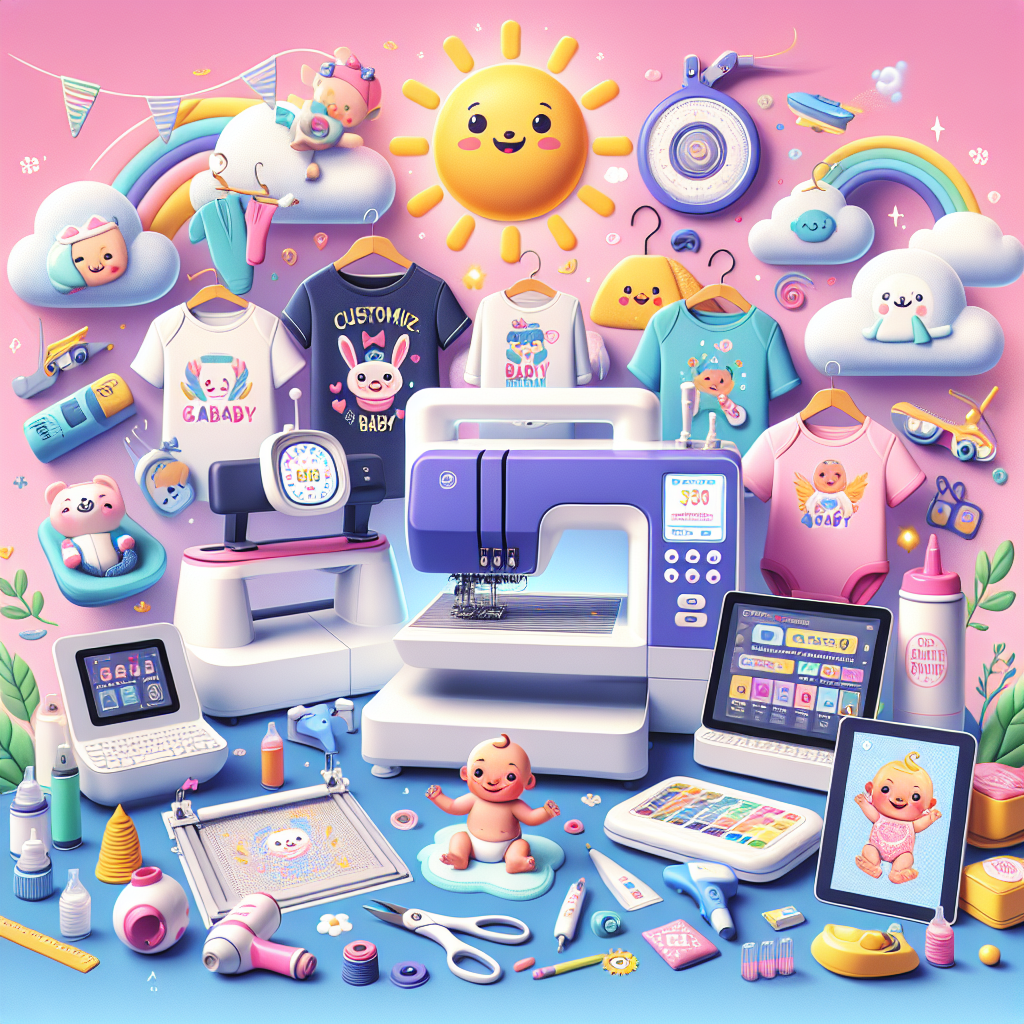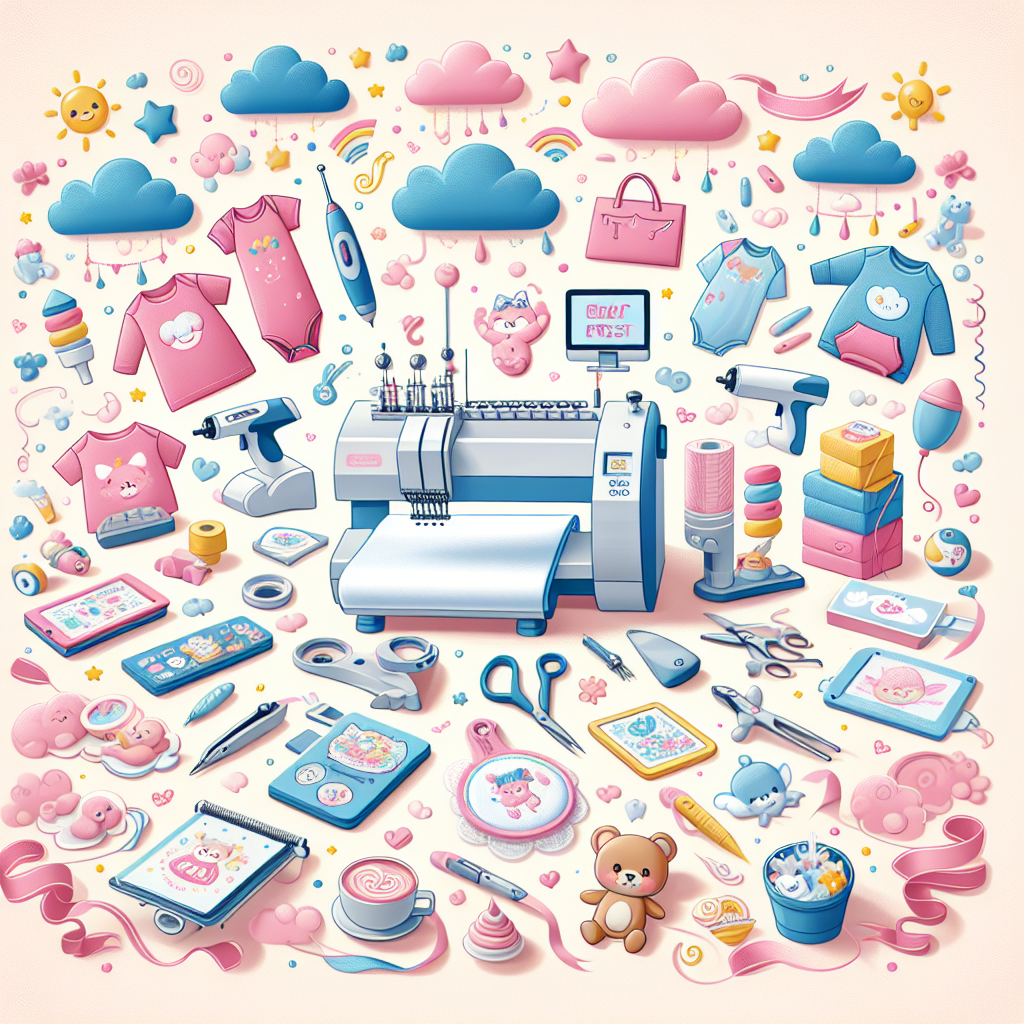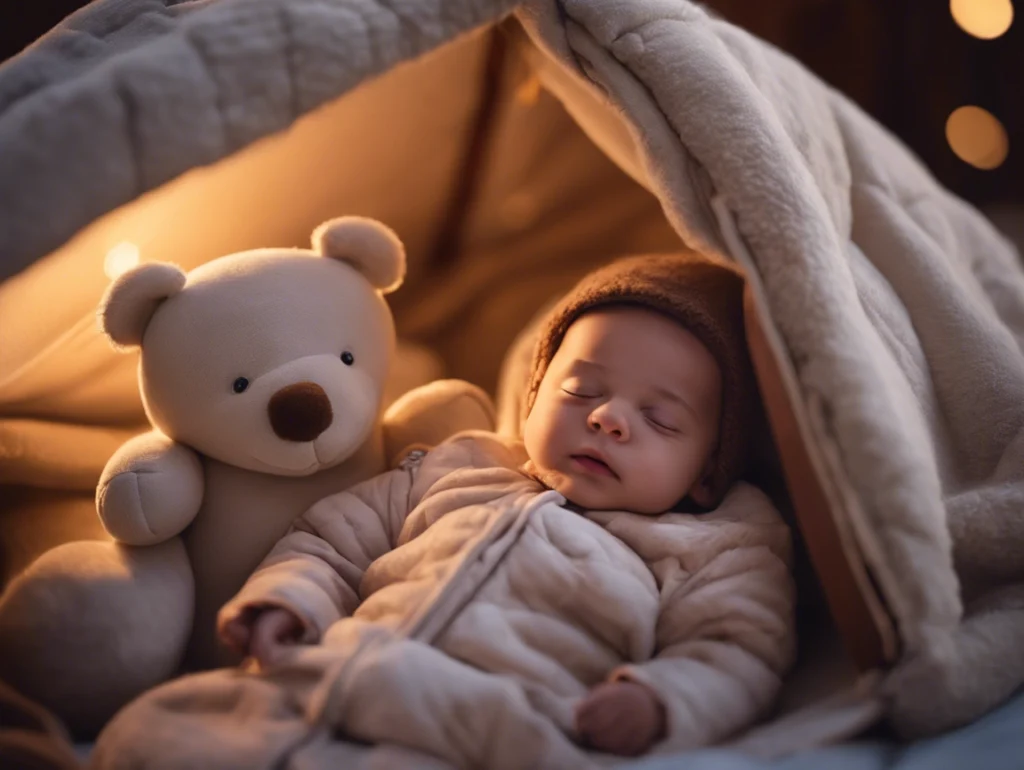Customization has become the magic word in the world of baby accessories. Parents don’t just want off-the-shelf products—they want something personal, something that speaks to their style and the love they have for their little one. So how do brands deliver these one-of-a-kind baby accessories? The answer lies in a combination of cutting-edge tools, clever tech, and a little bit of creativity.
Let’s dive into the tools and technologies that make customizing baby accessories an exciting experience for both businesses and customers!

1. Embroidery Machines: The Classic Touch
There’s something undeniably charming about an embroidered baby blanket or onesie. Embroidery machines are one of the oldest—and still one of the most popular—tools used to add personalization to baby accessories. Whether it’s a baby’s name, a cute design, or a meaningful quote, embroidery brings that personal flair that customers crave.
How It Works:
- Computerized Embroidery Machines: These machines are programmed with custom designs that are stitched directly onto the fabric. Brands can adjust the thread colors, font styles, and designs based on customer preferences.
- Quick and Precise: Once the design is input, the machine does all the hard work, producing high-quality, precise, and durable embroidery.
If you’re curious about how personalized baby blankets are made, check out the beautiful custom baby blankets at Endearing Baby that use embroidery to bring parents’ designs to life!
2. Heat Press Machines: For That Professional Look
While embroidery is timeless, heat transfer printing has become a go-to method for customization, especially for prints and vinyl designs. This technique uses heat to transfer a design onto a fabric or accessory, making it ideal for creating vibrant, high-quality graphics.
How It Works:
- Heat Transfer Vinyl (HTV): This type of vinyl is cut into the desired design, and then applied to the fabric using a heat press machine. The heat activates the adhesive, permanently bonding the vinyl to the fabric.
- Design Flexibility: HTV allows for multi-color designs, patterns, and text that might be more complicated or costly to achieve with embroidery.
Pros of Heat Pressing:
- Cost-Effective: Unlike embroidery, which requires specialized thread and more time, heat pressing is generally more affordable, especially for small-batch customizations.
- Great for Larger Designs: Heat pressing can cover a larger area and is perfect for designs that involve intricate patterns or photos.
3. Direct-to-Garment (DTG) Printing: For Ultra-Detail
When you think of highly detailed designs—like those adorable baby illustrations or a fun family portrait on a onesie—Direct-to-Garment (DTG) printing might come to mind. DTG printing is often used for highly intricate designs that require a full spectrum of colors and fine details.
How It Works:
- Inkjet Technology: DTG printers work by spraying the design directly onto the fabric with special water-based inks. The ink soaks into the fibers of the fabric, ensuring vibrant and long-lasting prints.
- Perfect for Small Runs: DTG printing is ideal for brands offering small-batch, high-quality custom designs without compromising on details.
If you’re wondering how DTG printing looks in action, take a peek at the stunning personalized baby t-shirts from Endearing Baby, created with top-notch DTG technology for vibrant results!
4. Laser Engraving: The Precision Tool
For more upscale customizations, laser engraving is a fantastic option. Laser engraving involves using a high-powered laser to etch or cut designs onto materials such as wood, leather, or acrylic—perfect for personalized baby accessories like wooden toys, keepsake boxes, or leather baby shoes.
How It Works:
- Laser Beams: The laser beam vaporizes a small portion of the material, leaving behind a permanent design. This can include names, dates, or intricate patterns.
- Materials: Laser engraving works best on non-fabric materials like wood, glass, or leather.
Laser engraving is often used for personalized baby gifts that parents want to keep as treasured mementos.
5. Sublimation Printing: Bright Colors, Big Impact
Looking for a method that guarantees vibrant, long-lasting designs on polyester fabrics? Then sublimation printing is the way to go! Sublimation uses heat to turn solid dye into gas, which then embeds itself into the fabric fibers.
How It Works:
- Dye Sublimation: The design is first printed onto a transfer paper. Then, using heat and pressure, the ink is transferred directly into the fabric, making the design permanent and durable.
- Best for Light-Colored Fabrics: Sublimation works wonders on polyester and polymer-coated fabrics. It’s perfect for vibrant designs on baby onesies, bibs, and blankets.
Benefits of Sublimation:
- Full-Color Designs: With sublimation, you can achieve complex, full-color designs that pop, making it a favorite for creating custom baby accessories with playful themes or high-resolution imagery.
6. Customizable Online Platforms: Let Your Customers Design
As online shopping becomes more interactive, brands are incorporating customizable platforms that let customers create their own designs. These platforms are a win-win: customers can fully personalize their products, and businesses can gather real-time data on preferences.
How It Works:
- User-Friendly Design Tools: Brands can implement tools that let customers upload images, add text, choose colors, and even preview how their product will look once customized.
- Real-Time Customization: Whether it’s a personalized baby blanket or a custom diaper bag, these tools let customers experiment with designs in a simple, visual way.
For example, Endearing Baby’s customization tool lets you create personalized baby products with ease. See how easy it is to design something special for your little one here.
7. 3D Printing: The Future of Baby Accessories?
Although still in its early stages, 3D printing is making waves in the customization world. Imagine printing a personalized baby rattle or a one-of-a-kind baby shoe—the possibilities are endless.
How It Works:
- Layer-by-Layer Printing: 3D printers create objects by adding material layer by layer, building up a design. This allows for intricate shapes and designs that would be difficult or impossible to create with traditional methods.
- Custom Materials: Brands can use 3D printing to create accessories with unique materials, such as biodegradable plastics or eco-friendly alternatives.
As technology continues to improve, expect 3D printing to become a more common tool for creating bespoke baby accessories. It’s a futuristic way to deliver something truly unique!
Conclusion: It’s All About Creativity and Technology
Personalized baby accessories are no longer just a trend—they’re a fundamental part of the market. Whether it’s through embroidery, heat transfer, laser engraving, or even 3D printing, technology plays a key role in bringing those custom products to life. As brands, it’s essential to leverage these tools to offer meaningful, personalized experiences for customers, while also staying ahead of the competition.
If you’re in the baby product business and want to see these tools in action, check out how Endearing Baby uses advanced tech to offer delightful, personalized baby accessories that parents love.

